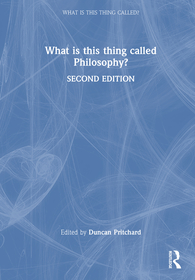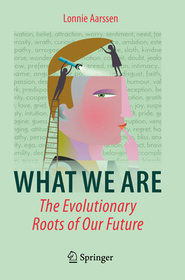
The Origin of Language and Consciousness
How Social Orders and Communicative Concerns Gave Rise to Speech and Cognitive Abilities
Series: World-Systems Evolution and Global Futures;
- Publisher's listprice EUR 149.79
-
62 125 Ft (59 167 Ft + 5% VAT)
The price is estimated because at the time of ordering we do not know what conversion rates will apply to HUF / product currency when the book arrives. In case HUF is weaker, the price increases slightly, in case HUF is stronger, the price goes lower slightly.
- Discount 12% (cc. 7 455 Ft off)
- Discounted price 54 670 Ft (52 067 Ft + 5% VAT)
Subcribe now and take benefit of a favourable price.
Subscribe
62 125 Ft

Availability
printed on demand
Why don't you give exact delivery time?
Delivery time is estimated on our previous experiences. We give estimations only, because we order from outside Hungary, and the delivery time mainly depends on how quickly the publisher supplies the book. Faster or slower deliveries both happen, but we do our best to supply as quickly as possible.
Product details:
- Edition number 2023
- Publisher Springer Nature Switzerland
- Date of Publication 25 June 2023
- Number of Volumes 1 pieces, Book
- ISBN 9783031306297
- Binding Hardback
- No. of pages361 pages
- Size 235x155 mm
- Weight 781 g
- Language English
- Illustrations XLIX, 361 p. 68 illus. Illustrations, black & white 473
Categories
Long description:
"
This book presents an evolutionary theory of the origin and step-by-step development of linguistic structures and cognitive abilities from the early stages of anthropogenesis to the Upper Paleolithic. Emphasizing the social nature of the human mind and using an extended version of C.Hempel's explanatory logic, the author proves that language and consciousness emerged and evolved through the daily efforts of our ancestors to overcome mutual misunderstandings in increasingly complex social orders with increasing tasks on memory, thinking, and normative regulation of behavior, with the addition of new and new communicative concerns.
The book addresses questions such as the following:
- What unique social conditions led to the emergence of the first protosyllables and protowords?
- What steps enabled the crossing of the ""linguistic Rubicon"" (between animal communication and human speech)?
- Why were syllables and phonemes needed?
- How did ourancestors overcome the difficulties of misunderstanding?
- How, when, and why did ancient people learn to speak in turns? Why did they begin to talk about past and distant events?
- What is consciousness and how did it evolve along with language?
- How many original languages were there and why are there roughly 200 philas (language macrofamilies)?
- How and why did the number of languages and the degree of their complexity change in pre-written history?
- Did the Romance languages really evolve from Latin?
Accordingly, the book will appeal to scholars in various disciplines who are interested in a better understanding of the cognitive aspects of anthropogenesis and the ancient origins of language and consciousness.
" MoreTable of Contents:
"
Chapter 1. Structuring the conceptual field: Typologies, paradigms, and results.- Chapter 2. Basic concepts and principles of cognitive evolution.- Chapter 3. Explanatory fundamentals: From niches to interactive rituals.- Chapter 4. Self-domestication and normativity: Conditions for the breakthrough to speech.- Chapter 5. Crossing the ""language Rubicon"": From signal multiplication to distinguishing protowords.- Chapter 6. The childhood of language: Rephrasing rituals and reactive protophrases.- Chapter 7. ""Managing imagination"" of interlocutors and the phases of protolanguage development.- Chapter 8. The need for syntax and illusion of the consciousness totality.- Chapter 9. Bridging the Pre-language gap.- Chapter 10. Linguistic complexity and simplicity: The socioevolutionary roots.- Chapter 11. The nature of the affinity of modern languages.- Chapter 12. Conclusion.
" More












